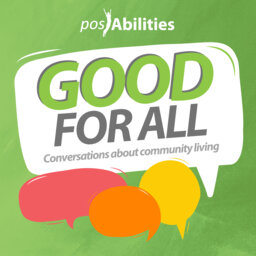In the Studio with the Artists of INCLUSION
For the past 16 years, posAbilities has hosted the INCLUSION Art Show & Sale, BC's largest disability art show. The annual show celebrates the work of artists with diverse abilities and features hundreds of artworks in various mediums. In this episode, you'll hear from several artists about their work and their experience participating in the show.
"Master of the Art" Alex Lecce is an independent artist from Coquitlam. Alex participated in the show for the first time last year, and his paintings, sketches, and models were enthusiastically received by guests. You can see Alex's work on his website, alexanderlecce.wixsite.com/website.
PotteryWorks is a multi-media art studio, sponsored by the Community Living Society, that has participated in our art show for many years. The studio is a collective of over 40 artists who work independently or with support, each inspiring one another to reach their artistic aspirations. Learn more about PotteryWorks and visit their online store at potteryworks.ca.
You'll find more information about the INCLUSION Art Show and photos from past shows at inclusionartshow.com. To learn more about our arts initiatives and everything else we do, visit us at posabilities.ca.
You can view some of the works mentioned in this episode on our blog: In the Studio with the Artists of INCLUSION
 Good for All
Good for All


